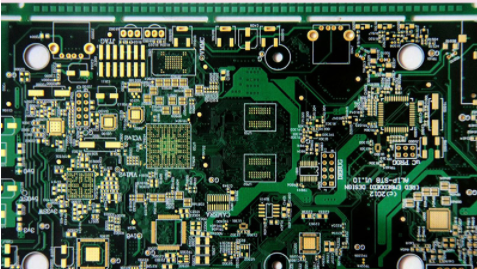The PCB layout of radio frequency (RF) circuits should be carried out on the basis of understanding the basic principles of circuit board structure, power supply wiring and grounding. This article discusses the relevant basic principles, and provides some practical, proven power wiring, power bypass and grounding techniques, which can effectively improve the performance indicators of RF design. Considering that the PLL spurious signal in the actual design is very sensitive to the power coupling, grounding and the position of the filter element, this article focuses on the method of suppressing the PLL spurious signal.
The wise PCB layer assignment is convenient to simplify the subsequent wiring processing. For a four-layer PCB (a commonly used circuit board in WLAN), in most applications, the top layer of the circuit board is used to place components and RF leads, and the second layer is used as the system Ground, the power part is placed on the third layer, and any signal lines can be distributed on the fourth layer. The continuous ground plane layout of the second layer is necessary to establish an RF signal path with controlled impedance.

It also facilitates the shortest possible ground loop, and provides a high degree of electrical isolation for the first and third layers, making the two layers The coupling between is minimal. Of course, other board layer definition methods can also be used (especially when the circuit board has a different number of layers), but the above structure is a proven successful example.
When using the star topology Vcc lead, it is also necessary to take appropriate power decoupling, and the decoupling capacitor has a certain parasitic inductance. In fact, the capacitor is equivalent to a series-connected RLC circuit. The capacitor plays a leading role in the low frequency band, but at the self-excited oscillation frequency (SRF):
After that, the impedance of the capacitor will appear inductive. It can be seen that the capacitor only has a decoupling effect when the frequency is close to or lower than its SRF, and the capacitor exhibits low resistance at these frequencies. Typical S11 parameters under different capacitance values are given. From these curves, SRF can be clearly seen. It can also be seen that the larger the capacitance, the better the decoupling performance provided at lower frequencies (the lower the impedance presented) .
It is best to place a large-capacity capacitor, such as 2.2μF, at the main node of the Vcc star topology. This capacitor has a low SRF, which is very effective for eliminating low-frequency noise and establishing a stable DC voltage. Each power pin of the IC requires a low-capacity capacitor (such as 10nF) to filter out high-frequency noise that may be coupled to the power line. For those power pins that supply power to noise-sensitive circuits, two external bypass capacitors may be required. For example: using a 10pF capacitor in parallel with a 10nF capacitor to provide a bypass can provide a wider frequency range of decoupling and try to eliminate the influence of noise on the power supply voltage. Each power supply pin needs to be carefully inspected to determine how much decoupling capacitors are needed and at which frequency points the actual circuit is susceptible to noise interference.
The combination of good power supply decoupling technology with rigorous PCB board layout and Vcc leads (star topology) can lay a solid foundation for any RF system design. Although there are other factors that reduce the system performance indicators in the actual design, having a "noise-free" power supply is the basic element for optimizing system performance.